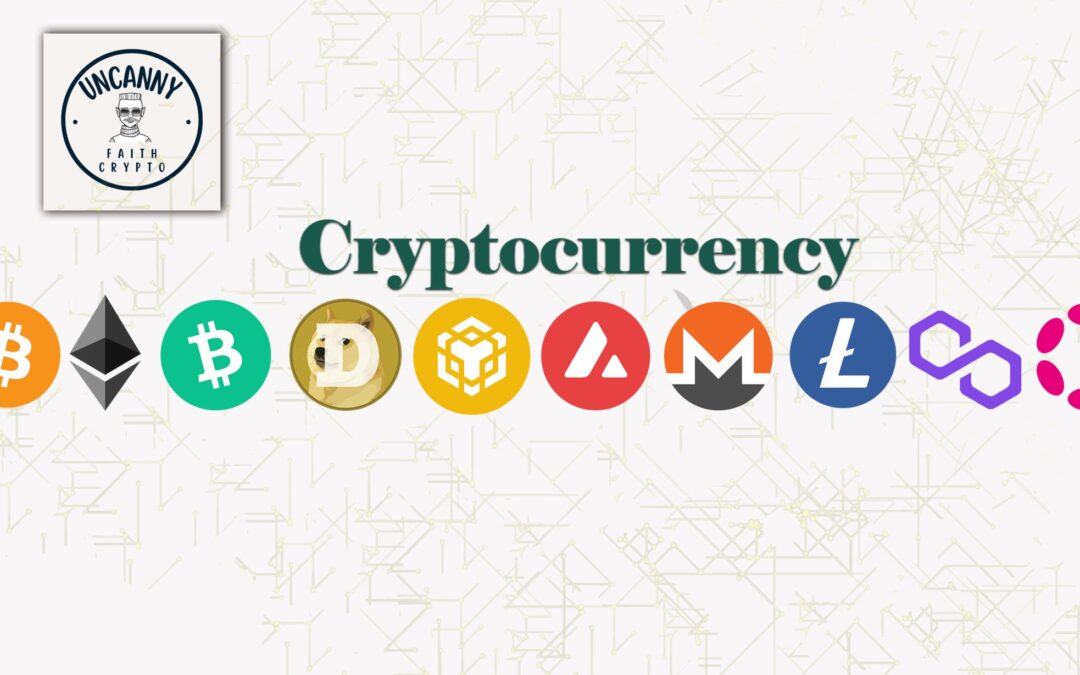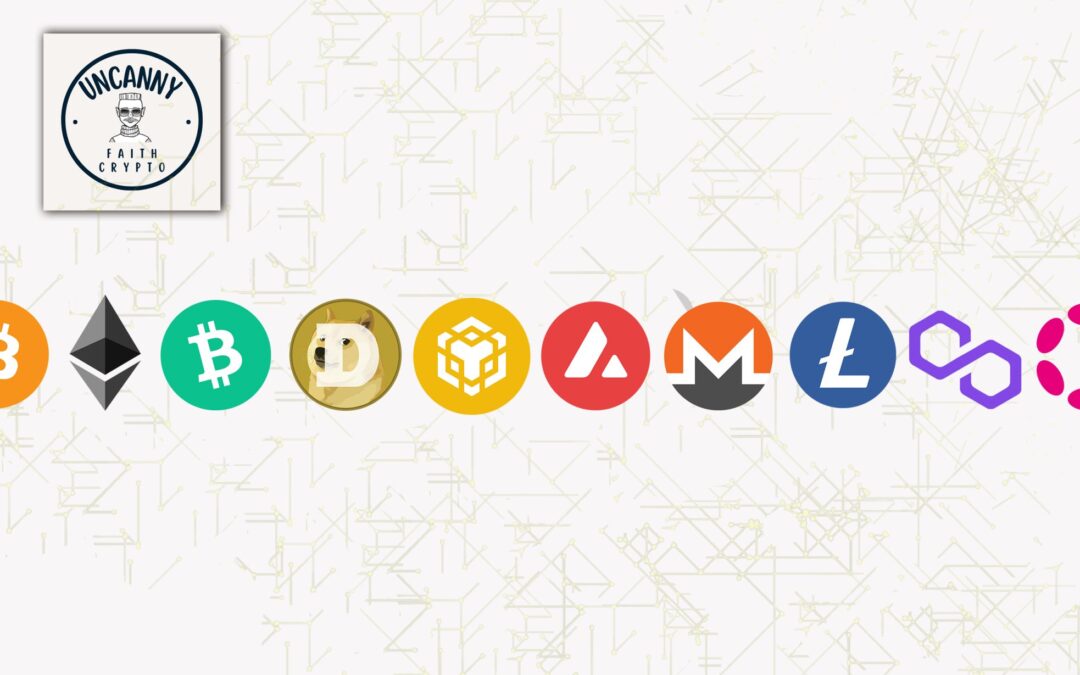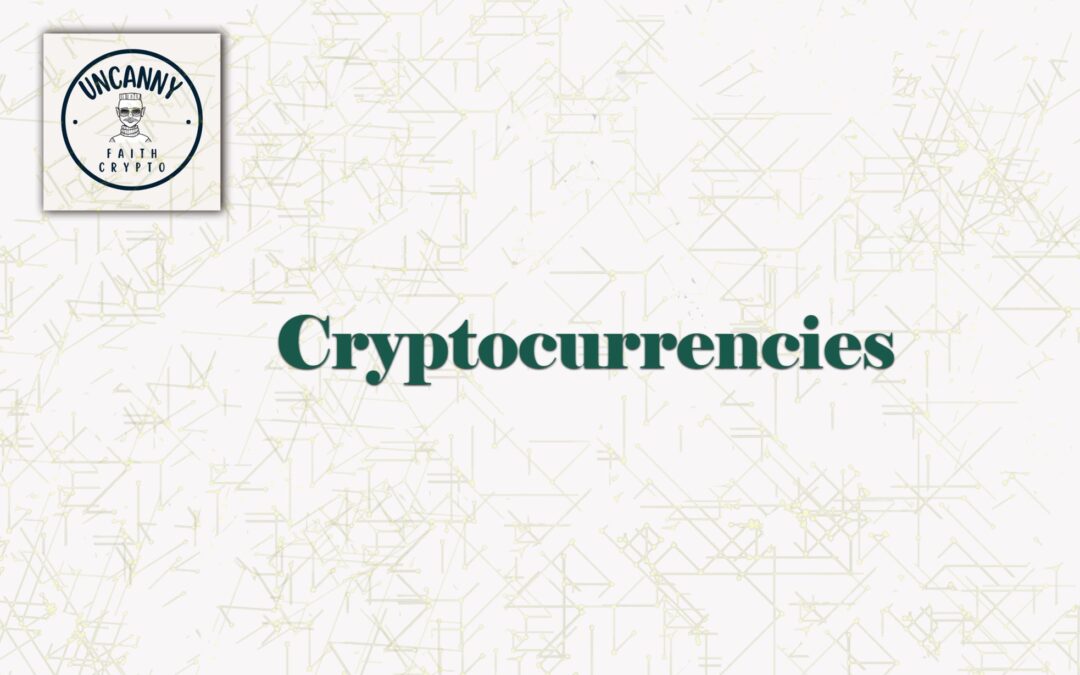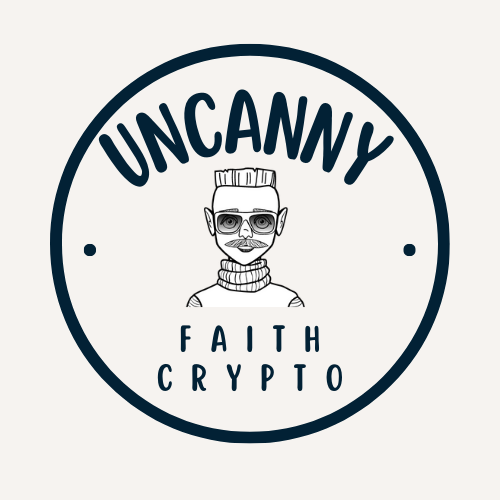
by uncannyfaith | Jan 1, 2025 | Blockchain technology, crypto, Cryptocurrency, Cryptocurrency news and updates, Investing and trading tips
The blockchain space has grown exponentially over the past decade, transforming industries and financial systems across the globe. NEAR Protocol, an innovative, developer-friendly blockchain, has consistently stood out for its scalability, user-focused approach, and transparency. As we look ahead to 2025, the evolution of NEAR Protocol promises significant implications for decentralised applications (dApps), Web3, and the broader blockchain ecosystem.
In this in-depth exploration, we’ll uncover the major trends shaping the future of NEAR Protocol over the next few years. Let’s dive in to discover how its emerging technologies, ecosystem partnerships, and user-centric strategies will define its trajectory.
What is NEAR Protocol? A Refresher for 2025 Readers
Before diving into the future, let’s quickly revisit NEAR Protocol’s purpose and advantages. NEAR Protocol is a layer-1 blockchain platform designed to overcome some of the most challenging limitations of earlier blockchain protocols—complexity, high fees, and scalability.
NEAR’s unique selling point lies in its sharding technology, specifically a design called Nightshade Sharding, which enables the network to process thousands of transactions per second (TPS) while keeping costs low. Staking, decentralisation, and developer accessibility are built into its core ethos.
As blockchain adoption becomes mainstream by 2025, NEAR remains two steps ahead, offering seamless user experiences and interoperability with other leading blockchains.
Key Trends to Watch for NEAR Protocol in 2025
The journey to 2025 will bring significant developments for NEAR Protocol and its ecosystem. Here are the biggest trends and advancements poised to shape the future:
1. Mass Adoption of Web3 on NEAR Protocol: The Gateway to Decentralisation
By 2025, blockchain adoption is expected to skyrocket, and NEAR will remain at the forefront of Web3 development. Web3—a decentralised internet where users control their data—relies heavily on scalable and user-friendly platforms, a space where NEAR excels.
NEAR’s increasing integration with Web3 tools like wallets, decentralised finance (DeFi) platforms, and NFT marketplaces is shortening the gap between blockchain enthusiasts and the mainstream audience.
- Key Example: NEAR’s wallet system is already recognised for being user-friendly, and by 2025, enhanced wallets with built-in fiat-to-crypto conversions could further simplify onboarding.
- Insight: Expect NEAR to serve as a “gateway to Web3,” particularly for industries like gaming, content creation, and social media, which are ripe for decentralisation.
NEAR addresses a pain point many potential Web3 users face: complexity. Its commitment to user-friendly frameworks will make decentralised apps feel intuitive, boosting adoption.
2. DeFi Expansion: NEAR’s Role in the New Financial Era
Decentralized Finance (DeFi) has already proven transformative, and by 2025, it will likely rival traditional financial systems in functionality. NEAR’s emphasis on low transaction costs and speed positions it as one of DeFi’s key building blocks.
Upcoming trends and innovations include:
- Cross-chain liquidity: NEAR knows that interoperability with Ethereum, Binance Smart Chain, and other networks is crucial. Bridges like Aurora and Rainbow Bridge enable NEAR to integrate seamlessly with other top blockchains.
- Stablecoins on NEAR: We are already seeing USD-pegged stablecoins gaining traction, and this trend is poised to strengthen by 2025. Stablecoins bring financial stability to crypto transactions, enabling global users to avoid crypto price volatility.
- Decentralised Exchanges (DEXs) powered by NEAR are likely to evolve dramatically in terms of low fees and improved liquidity pools.
The accessibility, speed, and security offered by NEAR will make it a top choice for DeFi developers and investors alike.
3. Ethereum Compatibility and Cross-Chain Integration
In the multichain future of 2025, interoperability will reign supreme. With the success of bridges such as Aurora, NEAR Protocol has positioned itself as both a complement and a competitor to Ethereum.
NEAR vs Ethereum: While Ethereum remains a dominant force in the blockchain space, NEAR’s innovative sharding mechanism solves many of Ethereum’s pain points, such as high transaction fees and scalability issues.
- By 2025, expect to see even more projects leveraging NEAR for less expensive operations while maintaining Ethereum compatibility. Projects built on Ethereum will seamlessly integrate with NEAR’s infrastructure, benefiting from the latter’s efficiency.
- Prediction: NEAR-Dapps will cater to Ethereum users seeking faster, cheaper alternatives without migrating from Ethereum entirely.
4. Developer-Centric Growth
NEAR was designed with developers in mind. The protocol offers access to easy-to-use tools and programming languages (such as Rust and AssemblyScript), which greatly lower entry barriers for blockchain development.
In 2025, expect a global surge in developer activity within the NEAR ecosystem as blockchain technology penetrates education systems, institutions, and emerging markets. NEAR’s Fund initiatives, hackathons, and grants have already attracted innovative projects, and this efficiency will only strengthen leading up to 2025.
- Key Insight: Developer innovation shapes blockchain ecosystems. NEAR, with its beginner-friendly software development kits (SDKs), will become the first choice for new startups seeking both technical support and blockchain-native solutions.
Think of NEAR as the "WordPress" for blockchain developers—many will turn to its user-friendly tools to build their projects effortlessly.
5. Sustainability and Green Blockchain Solutions
One of NEAR Protocol’s underrated advantages is its focus on being a climate-neutral blockchain. With energy consumption becoming a serious consideration for blockchain networks, sustainability will become even more critical by 2025.
NEAR Protocol’s Proof-of-Stake (PoS) consensus mechanism is not only faster and more cost-efficient than Proof-of-Work (PoW) blockchains like Bitcoin but also much more environmentally friendly. As global regulatory frameworks tighten regarding energy consumption, NEAR’s environmentally conscious stance will set it apart as a preferred sustainable blockchain solution.
6. Growth of the NFT and Metaverse Ecosystem on NEAR
Non-fungible tokens (NFTs) have reshaped how we think about ownership, art, and gaming. NEAR Protocol provides an efficient home for NFT projects thanks to its low fees and high-speed transactions.
By 2025:
- Expect NEAR’s NFT marketplaces to compete on par with Ethereum-based ones such as OpenSea and Blur.
- Gaming and Metaverse: The gaming industry will likely embrace NEAR due to its ease of use and developer-first design. Blockchain-based metaverse platforms backed by NEAR’s infrastructure will allow seamless virtual economies to flourish.
As we spend more time in virtual worlds, NEAR will undoubtedly power blockchain-based ecosystems that underlie the metaverse’s economy.
7. Regulatory Compliance and Institutional Adoption
In 2025, all major blockchain platforms will face increased scrutiny from regulators worldwide. NEAR’s transparency and robust governance mechanisms ensure compliance without sacrificing decentralisation.
Institutional involvement in blockchain is already growing, and NEAR’s PoS model makes it appealing for enterprises seeking to explore blockchain without environmental backlash. Supply chain management, identity verification, and financial services will all benefit from NEAR-powered solutions—expect pilot projects to scale dramatically over the next two years.
Why NEAR Protocol has a Competitive Edge
NEAR has several unique features that distinguish it from its competitors:
- Low transaction fees: Expect these to remain stable, drawing cost-conscious users by 2025.
- Scalable sharding: Already efficient, NEAR’s sharding upgrades will enable seamless handling of millions of users.
- User-friendly design: NEAR’s onboarding process is so simple that even non-technical users can navigate it effortlessly.
Unlike Ethereum, which struggles with high fees during peak demand, NEAR provides a smoother, more affordable experience, critical as mass adoption accelerates.
FAQs: Your 2025 Guide to NEAR Protocol Trends
1. What makes NEAR Protocol unique in 2025?
NEAR stands out because of its user-friendly approach, low fees, sustainability focus, and efficient scaling via sharding—features that simplify Web3 adoption.
2. Can NEAR compete with Ethereum?
While Ethereum dominates smart contracts, NEAR’s speed, cost efficiency, and bridges like Aurora make it a strong competitor and complement.
3. Is NEAR Protocol eco-friendly?
Yes, NEAR Protocol is climate-neutral due to its PoS model, which significantly reduces energy consumption compared to Bitcoin and other PoW networks.
4. What industries could NEAR disrupt by 2025?
NEAR has applications in gaming, DeFi, supply chain, content creation (via NFTs), and finance, making it a versatile blockchain for various industries.
Conclusion: NEAR’s Prosperous Path to 2025 and Beyond
As the blockchain landscape evolves, NEAR Protocol is well-positioned to solidify its role as a leading force in the industry. From scaling Web3 adoption to revolutionising the NFT space and championing eco-conscious blockchain practices, NEAR stands out as a platform where innovation and scalability merge seamlessly. By prioritising both user experience and technical excellence, NEAR is not just surviving the blockchain race; it’s thriving in it.
For businesses, developers, or anyone keen on the blockchain space, keeping a pulse on NEAR Protocol in 2025 will be crucial to understanding how the future unfolds.
Optimize for search engines: Don’t forget to include alt text for images such as “NEAR Protocol ecosystem growth infographic,” link to authoritative resources, and ensure mobile responsiveness to rank higher on search results! Welcome to NEAR’s exciting future—are you ready? ✨

by uncannyfaith | Jan 1, 2025 | Blockchain technology, crypto, Cryptocurrency, Cryptocurrency news and updates, Investing and trading tips
NEO Price Predictions for 2025: What Does the Future Hold?
When it comes to the world of cryptocurrency, predicting prices is both an art and a science. Among the many cryptocurrencies vying for attention, NEO, often referred to as the “Ethereum of China,” has carved a unique niche. Known for its innovative approach to smart contracts and decentralised applications (dApps), NEO is more than just another token — it represents a thriving ecosystem. But what does the future hold for NEO, particularly as we look toward 2025?
In this in-depth article, we’ll explore NEO price predictions for 2025, including its potential, market trends, and factors that may influence its trajectory. Whether you’re a seasoned investor, a crypto enthusiast, or just starting your research, this guide will offer valuable insights to help you navigate the possibilities.
Understanding NEO: A Quick Overview
Before diving deep into predictions and forecasts, let’s revisit what NEO is and why it has garnered so much attention.
NEO, dubbed the “Smart Economy” platform, was founded in 2014 and is one of the earliest blockchain projects aimed at digitally transforming traditional economies. Unlike Bitcoin or other straightforward cryptocurrencies, NEO focuses on offering a robust framework for building dApps, launching Initial Coin Offerings (ICOs), and digitising assets.
Key Features of NEO:
- Dual Token Ecosystem: NEO has two tokens – NEO (governance token) and GAS (used for network fees and smart contract execution).
- Eco-Friendly Proof of Stake (dBFT): NEO uses a consensus mechanism called Delegated Byzantine Fault Tolerance (dBFT), which is faster and more energy-efficient compared to Proof of Work (used by Bitcoin).
- Smart Contracts: Like Ethereum, NEO supports the execution of smart contracts, but with programming language flexibility, allowing developers to use C#, Java, and Python, among others.
- China-Based Appeal: Based in China, NEO remains relevant in Asia even as regulatory pressures mount against decentralised cryptocurrencies.
With this robust technological foundation, predicting NEO’s price by 2025 requires a nuanced understanding of its ecosystem, market forces, and global crypto trends.
Factors Influencing NEO’s Price in 2025
Several factors will likely drive NEO’s performance in the next few years. Let’s explore them in detail:
1. Broader Cryptocurrency Market Trends
The cryptocurrency market is notoriously volatile. From 2017’s ICO boom to 2021’s DeFi and NFT surge, key cycles shape the prices of all major altcoins, including NEO.
Key Insight:
By 2025, the global adoption of blockchain technology and crypto regulations will likely play a significant role. A bull market in 2024–2025 could see renewed attention on coins like NEO, propelling prices to new heights. Conversely, bearish global macroeconomic trends could suppress speculative investments and limit growth.
2. Institutional Adoption and Enterprise Interest
NEO’s appeal lies in its ability to digitise assets and provide enterprise-grade blockchain solutions. For instance, if governments or corporations adopt NEO technology for digital identities, tokenisation, or compliance-driven smart contracts, its intrinsic value will grow significantly.
Pro Insight:
Future partnerships with enterprises due to China’s heavy focus on blockchain innovation could lead to a stronger market position for NEO in 2025. Watch for institutional collaborations to assess its potential price movements.
3. Chinese Policies and Regulations
As the “Ethereum of China,” NEO is uniquely poised to benefit from China’s emphasis on blockchain development. While cryptocurrencies like Bitcoin face restrictions, domestically grown platforms like NEO may align with government policies focusing on blockchain-backed services.
However, unpredictable regulatory crackdowns can also prove to be a double-edged sword.
4. Technological Improvements and Ecosystem Growth
NEO 3.0, a major upgrade expected to revitalise the network with enhanced functionality and usability, is a critical factor. If successfully executed, it will likely boost user adoption, attract more developers, and inflate its price further.
5. Competition in the Smart Contract Space
NEO is up against stiff competition from Ethereum, Binance Smart Chain, Solana, and Polkadot. A lack of differentiation may hinder its growth, whereas targeted innovation in niche segments (e.g., government applications) could set it apart.
NEO Price Predictions for 2025
Let’s now explore actual price forecasts for NEO based on expert analysis, market speculation, and projected developments.
Bullish Scenario: NEO Surges to $250
In an optimistic scenario:
- NEO’s ecosystem thrives, backed by rising adoption of dApps and tokenised assets.
- China’s government promotes its blockchain-backed initiative domestically, giving platforms like NEO a major edge.
- Bitcoin’s price hits new all-time highs, sparking a prolonged bull run.
In this speculative environment, NEO could trade between $200–$250 by 2025, offering substantial returns for early adopters.
Realistic Scenario: A Steady Rise to $80–$120
Under balanced market conditions:
- NEO 3.0 attracts moderate success, boosting developer and investor interest.
- While regulatory challenges persist, a rising global appetite for smart contracts supports steady growth.
In this case, experts anticipate NEO’s price to fall between $80–$120, reflecting sustainable progress rather than meteoric rise.
Bearish Scenario: Sideways Trading Below $50
In a pessimistic outlook:
- NEO may stagnate if fierce competition (e.g., Ethereum 2.0 or Solana) overtakes market share.
- Regulatory headwinds in China dampen adoption rates.
- Broader economic instability discourages risky crypto investments.
Under these conditions, NEO could struggle to break resistance levels and remain capped at $40–$50 by 2025.
Actionable Tips for NEO Investors
Whether you’re bullish, bearish, or somewhere in between, here are some strategic insights to keep in mind when considering NEO as an investment:
1. Diversify Your Portfolio
While NEO offers potential, it’s just one project in a highly competitive industry. Diversify your investments across other promising tokens like Ethereum, Polkadot, or Cardano to mitigate risks.
2. Keep Tabs on NEO 3.0 Updates
Follow news and developer updates on NEO 3.0. How successfully it gets implemented will largely determine whether the platform experiences an uptick in adoption — and price.
3. Monitor Chinese Blockchain Adoption
Given NEO’s “home court” advantage, policy announcements, partnerships, and pilot initiatives in China could affect its trajectory significantly. Be proactive in tracking news from China.
4. Adopt a Long-Term Mindset
NEO could take years to deliver its full value proposition. Hasty, short-term speculation may not align with its developmental roadmap. Aim for a long-term holding strategy to maximise gains.
Why NEO Matters in the 2025 Crypto Landscape
Despite its ups and downs, NEO remains relevant because of its vision of a “Smart Economy.” As the world moves toward digitising assets and governments explore centralised digital currencies (CBDCs), NEO’s design philosophy finds strong alignment with future trends.
Compared to other blockchain networks, NEO’s unique geographical position and versatility put it in a strong position to capitalise on regional opportunities and global trends alike.
FAQs: NEO Price Predictions 2025
Here are some commonly asked questions about NEO and its future projections:
1. Is NEO a Good Investment in 2025?
NEO could become a compelling investment if it capitalises on market trends, resolves current shortcomings (e.g., developer adoption), and successfully launches NEO 3.0.
2. What Will Drive NEO’s Price by 2025?
Key drivers include global crypto adoption, competition from rival smart contract platforms, and China’s blockchain-friendly regulations.
3. Can NEO Reach $500 by 2025?
While theoretically possible during an unprecedented bull run, a more realistic high-end target is $250 based on current trends and project fundamentals.
4. Where Can I Buy NEO?
NEO is available across major exchanges such as Binance, KuCoin, and Huobi. Remember to use secure wallets for long-term storage.
Final Thoughts
Predicting the future price of any cryptocurrency is challenging, and NEO is no exception. With its strong foundation, ongoing updates (NEO 3.0), and unique ties to China’s blockchain initiatives, NEO has significant growth potential. However, as with all investments, approach with caution, conduct thorough research, and stay informed about market trends.
Whether you’re considering NEO for its innovative smart contract capabilities or simply as a speculative asset, the road to 2025 will undoubtedly be an exciting journey. So, what are your thoughts on NEO’s potential? Let us know, and join us in continuing to track this dynamic cryptocurrency.

by uncannyfaith | Jan 1, 2025 | Cryptocurrency news and updates
The Cryptocurrency Market: Opportunities Amidst Challenges as 2024 Ends
The cryptocurrency landscape is closing out 2024 with a mix of opportunities and setbacks. While certain altcoins show promise, the once-thriving meme coin market has faced a sharp downturn. In December, meme coins experienced a decline of nearly 30% in market capitalization after a volatile year of highs and lows. Meanwhile, traders remain hopeful for an altcoin season, as analysts monitor critical metrics for a potential market surge.
Adding a silver lining to an otherwise turbulent time, the presale success of the vote-to-earn (V2E) meme coin, Flockerz, has been a standout story, with its funding surpassing $8 million, setting the stage for potential future growth.
Meme Coin Market Suffers a 30% Decline in December
The meme coin market, known for its dramatic price swings fueled by community enthusiasm, entered turbulent waters in December. Market data shows that capitalization fell from a peak of $137.06 billion on December 9 to $92.67 billion by December 23—a nearly 30% drop within weeks.
One example of this volatility is Pepe (PEPE), currently the third-largest meme coin by market cap. Pepe saw a sharp price surge to $0.000026 on December 9, only to drop to $0.000017 by December 20. Despite this decline, the coin managed a slight recovery, climbing 5% to reach $0.000021, supported by its market capitalization, now standing at $8.8 billion.
The decline in meme coins has divided opinions among analysts. Some believe the steep drop signals the end of the so-called "meme coin supercycle," while others argue that strong community backing and speculative interest will help the industry recover. The future of meme coins now depends on their ability to regain momentum—or perhaps pivot toward utility-based projects as investor preferences evolve.
Altcoin Season on the Horizon?
The crypto market is closely watching for the long-awaited altcoin season, a phase characterized by explosive growth in alternative tokens. However, analysts caution that this "euphoric" phase will likely not materialize unless the total altcoin market capitalization exceeds its 2021 all-time high (ATH).
As of now, the market capitalization of all altcoins (excluding Bitcoin and Ethereum), measured by the TOTAL3 index metric, sits at $962.78 billion. This marks a year-to-date growth of 91.45%, but it still falls about 16% short of the critical 2021 ATH of $1.13 trillion. According to analysts, breaking this resistance level is crucial for triggering altseason. Conversely, a drop below $800 billion could signal further bearish conditions.
Traders are also facing challenges in maintaining long-term positions, as many are quick to take profits amidst market volatility. Still, some altcoins are already showing potential signs of early outperformance. For example, Bitget Token (BGB) and Virtual Protocol (VIRTUAL) have recently surged by over 20%, signaling increasing investor interest in smaller-cap tokens.
With Bitcoin dominance nearing 60%—a level that historically precedes a rotation towards alternative cryptocurrencies—many believe the stage is set for a breakout into altcoins, marking a potentially pivotal year ahead.
Flockerz (FLOCK) Presale Hits $8 Million Milestone
Amid the fluctuating crypto market, the vote-to-earn (V2E) meme coin, Flockerz (FLOCK), has managed to shine. The presale has been notably successful, crossing the impressive $8 million mark. The V2E mechanism allows token holders to participate in decision-making within the project’s decentralized autonomous organization (DAO), called Flocktopia. In return for their votes, participants are rewarded with FLOCK tokens.
This unique model emphasizes decentralization and community-driven growth, which has attracted significant attention from investors. Industry experts speculate that FLOCK could achieve a 10x return or more upon its official launch—a testament to the growing appeal of decentralized finance (DeFi) and community governance.
For those interested in participating in Flockerz, the current presale price stands at $0.0065823. Investors can acquire the tokens using a wide range of payment options, including ETH, BNB, USDT, and even traditional credit or debit cards.
Conclusion: A Pivotal Time for Cryptocurrencies
As 2024 comes to a close, the cryptocurrency market finds itself at a significant crossroads. While meme coins face challenges, excitement surrounding altcoin season and innovative projects like Flockerz offers opportunities for growth. Success will likely depend on whether critical milestones, such as the TOTAL3 metric crossing its ATH or continuing presale momentum, can generate renewed enthusiasm across the sector.
Traders, investors, and analysts will undoubtedly keep a close eye on the market as it transitions into 2025, navigating its risks and rewards in search of the next profitable breakthrough.

by uncannyfaith | Dec 30, 2024 | Cryptocurrency news and updates
The Rise of Bitcoin and Cryptocurrency Investments: A Comprehensive Guide
The cryptocurrency market continues to experience tremendous growth and increasing attention, with digital assets recording significant price gains. Recently, Bitcoin, the world’s leading cryptocurrency, crossed the historic $100,000 mark, highlighting strong investor confidence and market expansion.
Switzerland, recognized for its progressive approach toward cryptocurrencies, plays a crucial role in this financial revolution. With a crypto-friendly regulatory environment and a dynamic financial ecosystem, the country has become a global hub for blockchain innovation and cryptocurrency adoption.
However, venturing into cryptocurrency investments requires careful planning and education to ensure informed decisions and secure trading. Here’s a detailed guide to help you start investing in Bitcoin and why finding the right platform is essential for a smooth experience.
Why Invest in Bitcoin?
Bitcoin is often referred to as “digital gold” due to its unique qualities as a store of value and hedge against inflation. Over the years, Bitcoin has established itself as a reliable investment, with growing popularity among private and institutional investors alike. Its strong historical performance and potential for long-term growth have further legitimized its role in the modern financial system.
Key reasons for investing in Bitcoin include:
- Long-term Value Growth: Despite market volatility, Bitcoin has shown a consistent upward trend over time, making it a promising asset for growth-oriented investors.
- Hedge Against Inflation: Similar to gold, Bitcoin offers protection against inflation, appealing to those looking to preserve their capital’s value over time.
- Portfolio Diversification: Bitcoin enables diversification, offering a unique asset class that reduces exposure to traditional market risks.
Furthermore, Bitcoin’s increasing adoption by businesses and institutions solidifies its position in modern investment portfolios. Many companies, such as MicroStrategy, have incorporated Bitcoin into their financial strategy, showcasing confidence in its long-term potential.
How to Start Investing in Bitcoin
If you’re new to investing in Bitcoin, the following steps will guide you through a streamlined process to begin your journey:
1. Choose a Trustworthy Platform
Selecting a reliable and secure trading platform is crucial. Look for platforms with robust security measures, such as two-factor authentication (2FA), and those that align with regulatory standards. A platform that is well-established and user-friendly makes entering the cryptocurrency market a seamless experience.
2. Create an Account and Complete Verification
Once you’ve chosen a secure platform, set up an account and pass the necessary Know Your Customer (KYC) verification process. This step ensures compliance with regulations and provides a secure trading environment.
3. Fund Your Account
Next, fund your account using fiat currencies like Swiss francs (CHF) or euros (EUR). Many platforms now offer direct options to purchase Bitcoin with minimal transaction fees, providing cost-efficient solutions for new investors.
4. Make Your First Bitcoin Purchase
With your account funded, you’re ready to purchase Bitcoin. Follow the trading instructions provided by the platform and start monitoring your investment through a user-friendly dashboard.
By utilizing a trusted platform and adhering to secure practices, both beginners and experienced investors can confidently navigate the Bitcoin market.
Key Benefits of Bitcoin Investing
Bitcoin’s appeal spans a wide range of investors due to its innovative features and position as a disruptive technology within the financial sector. Below are some benefits of adding Bitcoin to your investment portfolio:
- High Liquidity: Bitcoin trading platforms with a robust market presence often achieve high liquidity, enabling efficient transactions even during periods of market volatility.
- Reduced Costs: Direct trading pairs such as EUR/BTC reduce conversion fees and simplify transactions, making the buying process cost-effective and straightforward.
- Enhanced Security: Security is a top priority in the crypto space. Trustworthy platforms emphasize safeguarding user data and funds through advanced technology and regulatory compliance.
- Access to Resources for Investors: Many platforms offer comprehensive educational tools, such as webinars, tutorials, and market analysis, allowing users to stay informed and make educated decisions.
Why Selecting the Right Platform is Essential
Choosing the right cryptocurrency platform is a critical step, especially when security, user experience, and support are top priorities. Opt for a platform that offers the following features:
- High Trading Volume: Operational efficiency matters when dealing with dynamic markets, and platforms with high liquidity ensure seamless trading experiences.
- User Convenience: Look for platforms offering direct trading pairs for fiat currencies like Euros, simplifying the process of buying Bitcoin without incurring additional charges.
- Top-Tier Security Standards: Trusted platforms provide two-factor authentication, regular security updates, and regulatory compliance to ensure the safety of your funds.
- Educational Resources: Extensive learning materials, such as tutorials and multilingual support, empower users to improve their knowledge and skills.
By leveraging these advantages, new and experienced investors alike can make well-informed trading decisions and take full control of their investments.
Start Your Bitcoin Journey Today
Whether you’re beginning your crypto journey or expanding your investment portfolio, having a reliable partner is essential. With access to advanced tools, educational resources, and secure trading platforms, investing in Bitcoin is now more accessible than ever.
Ready to diversify your investments and explore the potential of digital assets? Follow these simple steps to start your Bitcoin journey with confidence. With the right approach, you can capitalize on the opportunities presented by the booming cryptocurrency market and secure your place in this growing financial revolution.
Disclaimer: Proceed with Caution
Investing in cryptocurrencies poses risks, including the potential loss of capital. It is vital to conduct thorough research and seek professional financial advice before investing. Always choose secure platforms and practice safe trading strategies to protect your investments.

by uncannyfaith | Dec 30, 2024 | Blockchain technology, crypto, Cryptocurrency, Cryptocurrency news and updates, Investing and trading tips
In an increasingly digitised and data-driven world, decentralised technologies are rapidly redefining the way we live and do business. Among them, Hedera Hashgraph has garnered significant attention as a groundbreaking distributed ledger technology (DLT) that challenges traditional blockchain systems. But what does the future hold for Hedera Hashgraph in 2025? What trends might emerge, and how will it shape the landscape of decentralised technology? In this in-depth article, we’ll explore the key predictions for Hedera Hashgraph, its unique advantages, and its potential role in the future of Web3, sustainability, and enterprise adoption.
What is Hedera Hashgraph, and Why Does it Matter?
Before diving into future trends, let’s take a moment to understand what makes Hedera Hashgraph unique. Unlike traditional blockchain systems, Hedera Hashgraph uses a consensus mechanism called the Hashgraph algorithm, which ensures asynchronous Byzantine Fault Tolerance (ABFT)—one of the highest degrees of security for distributed systems.
With its ability to process 10,000+ transactions per second (TPS), ultra-low energy use, and predictable fees, Hedera Hashgraph is poised to tackle some of the limitations faced by traditional blockchains like Ethereum and Bitcoin. These include scalability challenges, high transaction fees, and environmental impact.
This positions Hedera as a strong contender to power a decentralised future in industries like finance, supply chain, gaming, and even healthcare. As we look ahead to 2025, these strengths, coupled with an evolving technology landscape, set the stage for Hedera Hashgraph’s growth.
Key Trends for Hedera Hashgraph in 2025
1. Mainstream Enterprise Adoption
By 2025, it’s likely that enterprise adoption of Hedera Hashgraph will skyrocket. Companies around the world are increasingly exploring distributed ledger technology to improve operations, enhance security, and streamline processes. Unlike many blockchain platforms, Hedera is enterprise-ready, offering high transaction speed, low costs, and fixed finality—qualities that enterprises prioritise.
Some of the industries where Hedera is accelerating adoption include:
- Supply Chain Management: Hedera could be used to create fully transparent supply chains with immutable audit trails.
- Finance: Financial services will benefit from Hedera’s efficiency and security for cross-border payments, tokenisation of assets, and decentralised identity verification.
- Healthcare: Hedera’s secure and scalable features could revolutionise how medical records are stored, shared, and accessed.
Noteworthy Insight:
Currently, organisations such as Boeing, Google, and IBM are part of the Hedera Governing Council, showing a strong institutional interest. By 2025, this list is expected to grow, making Hedera Hashgraph a go-to platform for enterprise-grade applications.
2. The Rise of Tokenised Assets
Hedera Hashgraph is uniquely suited for tokenisation of real-world assets, and this trend is set to gain significant momentum by 2025. From real estate to collectibles, the token economy will allow individuals and businesses to fractionalise ownership of high-value assets, making investments accessible to a larger audience.
For instance:
- Imagine owning a fraction of an artwork or a property through a Hedera-powered platform.
- Trading these digital tokens will be frictionless and cost-effective, thanks to Hedera’s high TPS and low fees.
Moreover, stablecoins, which are tokenised fiat currencies, are becoming increasingly relevant for global commerce. Hedera’s partnerships with organisations like Shinhan Bank and Standard Bank to build stablecoin solutions could play a major role in creating a robust digital cash ecosystem by 2025.
3. Decentralised Finance (DeFi) and Smart Contracts
Although Ethereum currently dominates the DeFi space, Hedera Hashgraph’s strengths give it significant potential to compete—and even excel—in this area by 2025.
Hedera supports smart contracts 2.0, which are more scalable, efficient, and secure compared to traditional blockchain-based smart contracts. By 2025, we’re likely to see a surge in DeFi protocols, from decentralised exchanges (DEXs) and lending platforms to liquidity pools, built on Hedera.
Project Spotlight:
One emerging example is Saucerswap, a decentralised exchange built on Hedera. By 2025, we could see many innovative DeFi applications flourishing on Hedera, especially with easy integration provided by its developer-friendly SDKs.
4. Sustainability and Carbon Markets
As the world races towards achieving net-zero emissions, the spotlight on sustainability is brighter than ever. Hedera Hashgraph’s energy-efficient DLT makes it one of the most environmentally friendly platforms available.
Why This Matters:
Unlike Proof-of-Work (PoW) blockchains like Bitcoin, which consume ample amounts of energy, Hedera achieves consensus with minimal carbon footprint. A transaction on Hedera consumes only 0.00017 kWh, compared to Bitcoin’s 885 kWh.
By 2025, it’s likely we’ll see Hedera at the forefront of carbon credit and renewable energy markets, providing tamper-proof tracking systems for trading carbon offsets and green energy certificates.
Moreover, with Hedera’s partnership with organisations like DOVU (a carbon credit ecosystem), it may lead the way in advancing transparent and verifiable sustainability efforts around the world.
5. Interoperability Across Platforms
As the decentralised ecosystem grows, the importance of interoperability between various chains cannot be overstated. By 2025, Hedera Hashgraph is expected to strengthen its foothold as one of the most interoperable platforms, perhaps even powering cross-chain bridges.
Hedera’s HTS (Hedera Token Service) enables users to issue and manage tokens seamlessly, opening the doors for collaboration across networks.
For developers and businesses, this means:
- Easier integration with other blockchain networks like Ethereum, Solana, or Polkadot.
- Access to an expansive ecosystem without technical limitations.
What Challenges Will Hedera Hashgraph Face Before 2025?
No discussion about the future would be complete without addressing the likely challenges. Despite its promising technology, Hedera Hashgraph will need to overcome:
- Competition: With blockchain giants like Ethereum’s shift to PoS and the rise of new technologies like Avalanche and Algorand, Hedera must constantly innovate.
- Education: Many people still equate DLT with blockchain, and Hashgraph might face the uphill battle of educating the market on its unique offering.
- Regulatory Uncertainty: As governments worldwide work to regulate cryptocurrencies and decentralised technologies, Hedera Hashgraph’s adoption could depend heavily on clear and favourable policies.
Preparing for a Hedera-Powered Future
Whether you’re an individual intrigued by decentralised tech or an organisation seeking cutting-edge solutions, Hedera Hashgraph represents a promising opportunity to step into the future. Here are a few actionable steps to consider:
- Join the Ecosystem: If you’re a developer, explore building applications on Hedera. Its powerful SDKs and APIs make integration user-friendly.
- Keep an Eye on Tokenised Assets: Prepare to invest or engage in tokenised asset economies, which Hedera is likely to spearhead.
- Stay Educated: Follow updates from the Hedera Governing Council and the broader community to stay informed.
Frequently Asked Questions
1. Why is Hedera Hashgraph called a Blockchain Alternative?
Hedera Hashgraph isn’t a blockchain; it uses a directed acyclic graph (DAG) structure, providing better scalability and speed without compromising security.
2. How Sustainable is Hedera?
Hedera is one of the most energy-efficient DLTs, consuming minimal energy compared to traditional blockchains like Bitcoin or Ethereum.
3. Can Hedera Host dApps Like Ethereum?
Yes, Hedera’s infrastructure supports decentralised applications (dApps) and smart contracts, making it a viable alternative to Ethereum.
Conclusion: The Road Ahead for Hedera in 2025
By 2025, Hedera Hashgraph is likely to establish itself as a critical player in the decentralised technology ecosystem. With its unique advantages—ranging from ultra-low energy consumption and cost predictability to scalability—Hedera offers significant potential to transform industries like finance, healthcare, and sustainability.
As decentralised tech becomes increasingly mainstream, Hedera’s innovation and enterprise readiness make it a compelling choice. Whether you’re an investor, developer, or simply a tech enthusiast, Hedera Hashgraph in 2025 promises a future of possibility, sustainability, and decentralisation.
The question is—are you ready to embrace it?
Would you like us to create infographics or suggest interactive charts to make this article even more engaging? Let us know!





